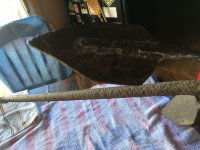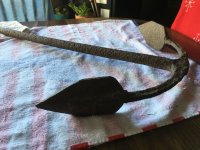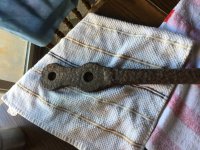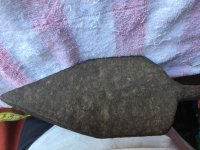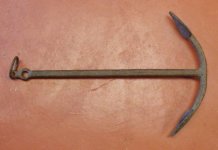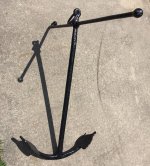Oddjob
Silver Member
- Aug 23, 2012
- 4,348
- 9,067
- Detector(s) used
- RD1000, GSSI Profiler EMP-400. GPZ 14 & 19
- Primary Interest:
- Other
Put this in this section of the site, seemed to be the only suitable place for it since it was a find from my Mother back in 41 at the beach in Port A Texas. Anyway, I am having the cowboys clean out my folks house and ship me their things. I asked them to give me the specs on the anchor below is what all they sent me, I guess I do not speak anchor because they measured out everything and seem to have a name for every part. LOL
Just wondering if folks know anything about anchors, maybe how old it is. This has bee hanging over the fire place at their house along with a ships bell that was found. Pics are crap, but they ship all stuff up here in a few weeks so I will be able to take better pics if these do not work for you guys.
Thanks for the help.
Weight 37 Pounds
Palm 3.5 x 4
Fluke 9"
Bill 4"
Arm 7.5 doubled
Crown 2.5 x 2
Shank 32.5. Circumference 4"
Throat 1.5"
Head 7" x 3" there is no stock never had one
Eye is double 1"
Total Bill 31.5" along metal. Open across 22.5"
Total top to bottom length 41.5"
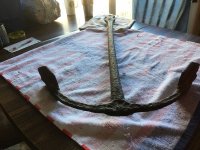
Just wondering if folks know anything about anchors, maybe how old it is. This has bee hanging over the fire place at their house along with a ships bell that was found. Pics are crap, but they ship all stuff up here in a few weeks so I will be able to take better pics if these do not work for you guys.
Thanks for the help.
Weight 37 Pounds
Palm 3.5 x 4
Fluke 9"
Bill 4"
Arm 7.5 doubled
Crown 2.5 x 2
Shank 32.5. Circumference 4"
Throat 1.5"
Head 7" x 3" there is no stock never had one
Eye is double 1"
Total Bill 31.5" along metal. Open across 22.5"
Total top to bottom length 41.5"



